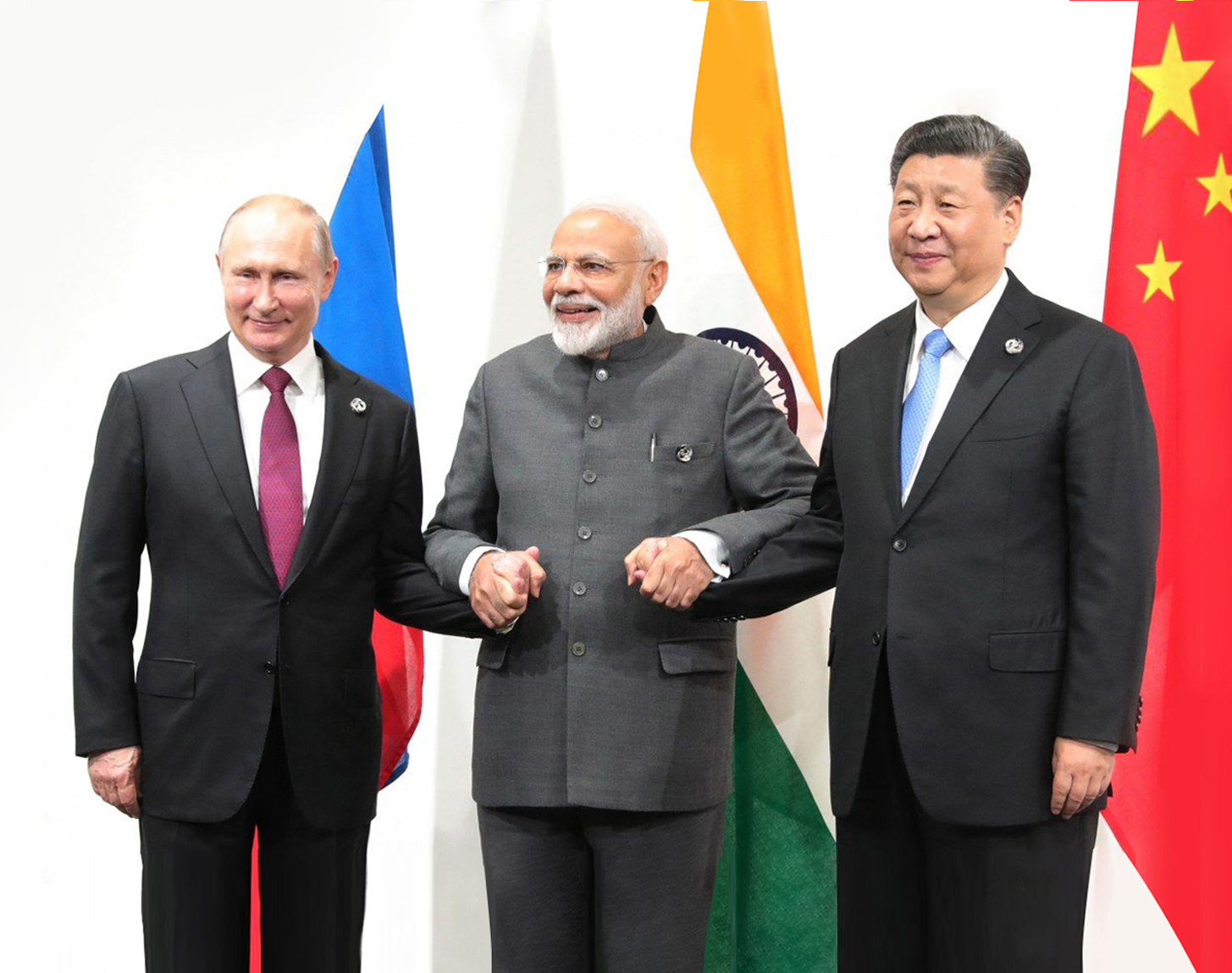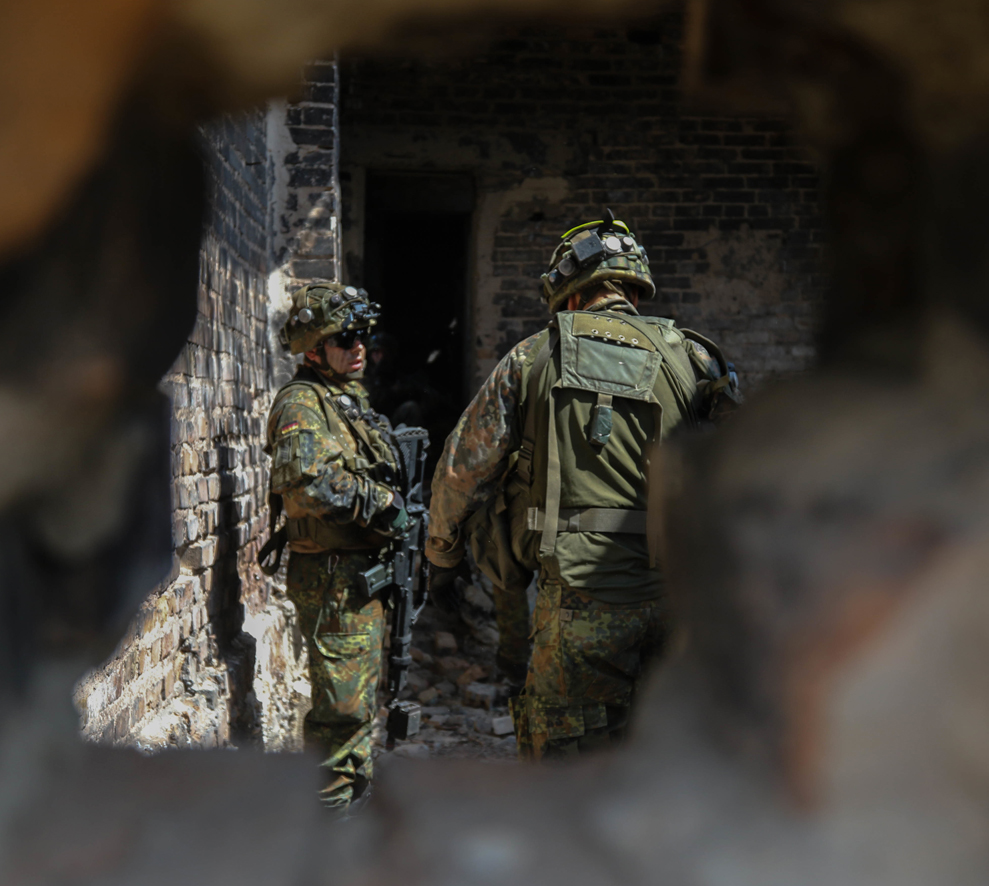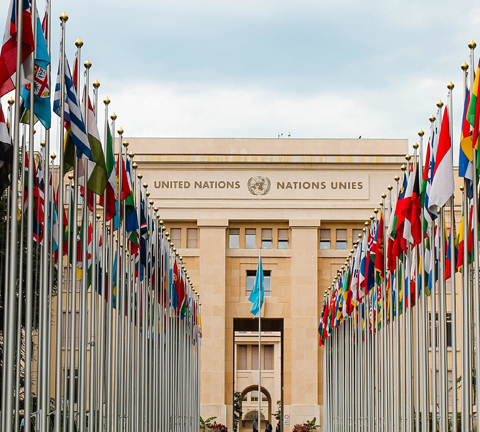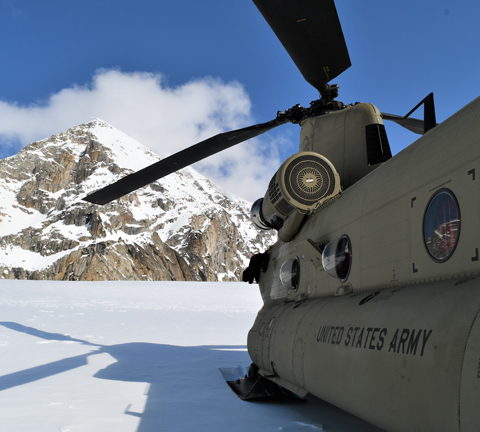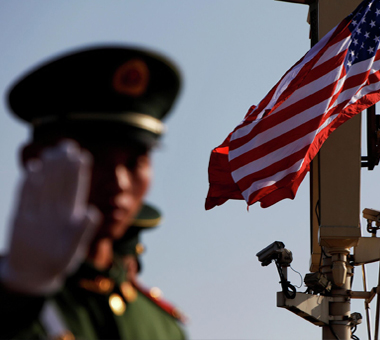The world's prevalent instability and strategic chaos embody an attractive opportunity for countries that seek to expand their regional and international influence. The unipolar world order might not be broken in the near future, but the world is approaching a new competition with rising political and economic powers. The U.S., which still assumes itself as the single and most powerful pole, is aware of such an ascension, with which it is trying to cope or find a formula that guarantees its strategic superiority. The present article discusses the future of China's, Russia's, and India's expansion as rising powers, and the extent to which such an expansion would contradict with the existing balance of powers.
China's Soft Power
China employs its soft power to have the maximum possible influence in the international arena, whereby its soft power is mainly manifested by the large population, the nature of its political system, the country's geopolitical location, and the widespread of the Chinese products.
China’s population in 2018 amounted to 1,394 billion, creating massive manpower that contributes to China’s economy. Emanating from their keenness on sustaining their human race, China abolished the one-child policy in 2015 and replaced it with the two-child policy. Yet, the population growth rate remained relatively low, standing at 0.6%, and leaving China at risk of decreasing labor force and the aging of a large proportion of its population.
China’s political system is comprised of an overarching central authority run by a single party, while it is economically liberal and open to the outer world adopting a domestic economic system that has a unique Chinese socialist spirit.
Such a hybrid democratic system provides the required flexibility to policymakers to deal with crises. It also enables China to adapt to the latest political developments in the international arena.
In 2017, the 19th National Congress of the Communist Party of China (CPC) has introduced the current Chinese President Xi Jinping's strategy into the party’s constitution, reflecting the significance and importance of the president's achievements.
The strategy was announced by state media under the title "Xi Jinping Thought on Socialism with Chinese Characteristics for a New Era", making a reference to a third era in China’s modern history following the two eras of the leaders: Mao Zedong, who put an end to the civil war, and Deng Xiaoping, the reform pioneer.
However, the political system would be of limited effect without China’s striking economic power; the country's GDP this year was $12.273 trillion, accounting for 15% of the global economy.
Although the GDP growth was affected by the U.S. sanctions, it is still relatively high (standing at 6.5%), which gives the Chinese economy the advantage of achieving superiority in the global trade balance. China’s exports in 2018 –excluding the current month of December– has amounted to nearly $2,274 billion as opposed to imports worth $1,827 billion, marking a $447 billion surplus in its trade balance.
Despite China’s current high growth rate, it is still considered the slowest since the global financial crisis in 2008 amidst the growing risks over China’s debt policies and the exchange of sanctions with the U.S.
When considering the challenges facing the Chinese economy, several studies suggest that China is qualified to dominate the global economic system in the medium or long term at the latest. According to London-based PwC’s study, China’s economy will rank first globally by 2050, surpassing the U.S. which will rank third worldwide.
Therefore, economic indicators support the hypothesis of a future imbalance in the economic order among the world's powers. The U.S. total GDP amounted to $20.5 trillion in 2018, accounting for 24.3% of the world's economy.
The Military Deployment in the South China Sea
In its endeavor to interpret its economic power into a political value, China seeks to expand its influence to ensure a prominent political stance in the world order, especially amid competing with several states of the Association of Southeast Asian Nations (ASEAN) on the sovereignty over the South China Sea. This sea, to which a reference was previously made in the article "The Geostrategic Competition over the Middle East and the Far East", is considered one of the world's most important waterways. The U.S. is also seeking to foster its relations with ASEAN countries due to the vitality and significance of this sea.
In August 2018, U.S. Secretary of State Mike Pompeo announced supporting the ASEAN countries with $300 million, under the pretext of countering cross-border threats. Not only did the U.S. support the countries competing with China over sea sovereignty, but it also increased its military presence in the region during the "freedom of navigation" process in response to what the U.S. considered as China’s militarization of the South China Sea.
In turn, China seeks to contain the crisis at the regional level with the countries of the South China Sea. In other words, it is trying to neutralize the U.S. presence in this crisis and then reach common understandings regionally.
In a meeting between Chinese President Xi Jinping and his Filipino counterpart Rodrigo Duterte in November 2017, Jinping stressed China's keenness on working with ASEAN to ensure peace, stability, and prosperity in the South China Sea region, according to Xinhua News Agency.
In parallel to the apparent desire to contain the crisis, China's position seemed categorical when –in July 2016– it completely rejected a verdict given by the tribunal of the Permanent Court of Arbitration in The Hague.
The court ruled that China is violating the Philippine's sovereign rights in the South China Sea, stating that China has no historic claim over the sea. The verdict prompted China to vow to boycott all arbitration procedures while emphasizing the role of its army in the protection of national sovereignty and maritime interests.
For the first time in May 2018, several Chinese launchers landed on one of the disputed islands with the Philippines and Taiwan, marking a significant development in the militarization of the South China Sea crisis. In the same month, two U.S. naval vessels sailed nearby artificial islands that are claimed by China, a step that Beijing considered as “a threat to its sovereignty”.
China, Israel, and the U.S. Anger
Not only China is expanding in its geopolitical sphere, but also seeking –through Israel– to foster its presence in the Middle East by signing long-term economic partnerships. The volume of Chinese investments in Israel in 2017 has increased to $25 billion after signing 10 bilateral agreements, marking a 10-fold increase compared to 2015, according to a report titled “What’s Behind Israel’s Growing Ties With China?” issued by the Council on Foreign Relations.
In a visit to Beijing last year, Israeli Prime Minister Benjamin Netanyahu revealed that Chinese investments in the Israeli hi-tech sector accounted for one-third of this sector despite the sensitivity of security technology.
China also has investments in the Israeli infrastructure as part of its giant Silk Road project that aims at creating a global transport network. SIPG signed a 25-year agreement to operate in the port of Haifa and expand it. The head of the Maritime Policy and Strategy Research Center at the University of Haifa has then warned that these vital investments may pose a threat to Israel's security. According to the Times of Israel newspaper, this port is located nearby an Israeli naval base, where Israeli nuclear submarines are believed to be located.
Hence, it can be argued that these relations are still lacking trust as opposed to the U.S.-Israeli relations as the Chinese-Israeli relations are still under construction with concerns that such an emerging relationship should not affect the deeply established U.S. relations with Israel.
In September 2018, the Hebrew newspaper Haaretz reported angry warnings by the U.S. naval generals against Chinaʹs management of the Haifa port, saying that it limits the free movement of the U.S. 6th fleet, which considers Haifa port as its home.
The warnings came during a conference in which the U.S. stressed that such Chinese projects should not be allowed to improve Chinaʹs strategic situation or intelligence capability, especially with the massive deployment of the U.S. Navy in the region.
Amid such a wave of American anger, China will seek to balance between the U.S. security concerns and the economic interests it aspires to achieve in its bilateral relations with Israel.
Considering the influence of the Israeli lobby in Washington, Tel Aviv can exploit its privileged relations with the U.S. to ease the current tensions between China and the U.S. and try to engage in providing alternatives to their mutual sanctions approach.
China’s endeavors to increase its influence and thus gain global hegemony seems to be rife with challenges, obstacles, and even sanctions. However, the non-confrontational culture established by the Chinese philosopher Confucius since ancient times makes China in favor of negotiations and reaching compromises without violence; not to mention the Chinese military spending, which amounted to $173 billion this year, but it is only a quarter of the U.S. military spending that amounts to $700 billion.
China, however, is continuously increasing its political presence in the international arena. China and Russia, for example, used their veto twice in 2016 and 2017, while during its entire membership in the Security Council from 1946 to 2015, China has used its veto nine times only.
Russia: A Rising Nuclear Power with Developing Economy
In a significant Ted Talk published in 2010, U.S. Professor Joseph Nye talked about the future of power in the 21st century. He addressed the concept of "the deployment of powers which refers to how power is distributed globally across various nations and international actors.
Professor Nye referred to combining soft and hard power within an integrated framework to generate "smart power", which enables the state to exploit all available resources to achieve its grand interests.
A deeper insight into Russia reveals that it lacks some elements of soft power such as population growth and the size of its economy. Russia’s population in 2018, for example, reached 144 million people, who are distributed across the Russian area that extends to 17 million square kilometers and is considered the largest in the world.
In the medium term, Russia's main challenge lies in its weak population growth, with a falling population rate that reflected a declining population at some point. This year is one case in point, during which the growth rate has dropped by 0.02%, putting more pressure on human resources to meet the labor market requirements or the growing military and security needs.
In spite of the lower oil prices, the imposed sanctions on Russia due to its stance on the Ukraine crisis and the U.S. accusations of Russian interferences in the 2016 U.S. presidential election, the Russian economy is still pursuing a fluctuating path with relatively modest gains.
This year's annual growth rate was 1.5%, with a GDP of $1.57 trillion, a factor that prevents Russia from achieving an advanced economic position at the global level. The U.S. and China's GDP, on the other hand, amounted to $20.25 trillion and $12.2 trillion, respectively. The Russian economy is not expected to see any boom at this level, whereby the country's GDP is expected to reach $1.80 trillion in 2022.
By December 2018, the Russian exports amounted to $41.3 billion, of which 80% were related to hydrocarbons. As oil prices are declining globally and the tendency in favor of alternative energy sources is increasing, the Russian economy must reduce its oil dependence and diversify other active sectors, in addition to placing further attention to the high-tech sector, especially as some of the imposed sanctions banns Russia from selling this technology.
During the "Made in Russia" campaign, the Kremlin called on Russian companies to develop technical solutions to face the repercussions of the imposed sanctions and replace the imported technologies with locally developed ones.
In 2017, several high-tech companies received funds worth $256 million from the Russian federal budget to achieve this objective. The small and medium-sized companies in Moscow alone could attract investments worth 100 billion rubles, taking advantage of the benefits offered by the high-tech industrial complexes that are established by Moscow city.
In an expression of Russia’s interest in high-tech investments, Russian President Vladimir Putin, following the annual conference in December 2017, has met with representatives of the Russian Military-Industrial Complex (MIC). Putin addressed the increasing investment in the military sector, adding that such funds should not only help to maintain Russia’s defense capability but also enable Russian corporates to surpass in high-tech civilian products in both Russian and foreign markets.
Due to the marginal global impact of the Russian economy as opposed to other major economies, Russia has resorted to maximizing its military power to compensate for this gap. The country's military spending, however, was affected by the economic conditions the country is going through. According to the Stockholm International Peace Research Institute, Russian military spending in 2017 amounted to $66 billion, marking a decline by 17% compared to 2016.
Even if Russia achieves a qualitative military superiority globally, it will remain a merely nuclear power, unless its superiority is combined with fostering its soft power elements and expanding its vital commercial sectors, particularly the ones which the world needs.
This would enable Russia to compete actively in the global race over leading the world, a goal that Russia is trying to achieve despite all challenges. Russia is aware that nuclear power is for deterrence purposes, but it cannot be used directly to achieve the country’s grand strategic gains.
Rising India
With a 7.5% growth rate in its GDP, the Indian economy ranked first in the world –surpassing China– in terms of economic growth rate, while ranking fifth as the biggest economy, according to Bloomberg. The volume of the Indian economy amounted to $2.6 trillion, accounting for 15% of global growth, according to the International Monetary Fund.
Several expectations point out that India is gradually expanding into the global economy. A forecast by the London-based Centre for Economics and Business Research predicts that India will rank third as the biggest economy by 2032. Another study conducted by PwC predicts the Indian economy to surpass the U.S. and rank second after China by 2050.
Such a rapid boom in the Indian economy is attributed to the strictly economic and structural reforms that are undertaken by India's Prime Minister Narendra Modi, particularly his imposition of goods and services tax.
An analysis by QNB Group published in September 2018 expected Indian exports to increase by next year, adding that if India fully implements its reforms, the GDP rate will increase by 8% regularly.
However, the large population and the dissatisfaction among some segments of society over the imposed taxation may pose a challenge to the full implementation of reforms, especially as the parliamentary elections will take place by next year.
The Indian PM and his party must, therefore, ensure gaining the needed political support, most importantly in the densely populated rural areas. India’s 1.358 billion population puts pressure on policymakers in reflecting economic growth on the GDP per capita, which is now $1,940 annually.
The population growth rates are surpassing economic growth, which is why Indian nationals do not fully feel the economic growth. According to a study by the United Nations, India is expected to be the most populous country by 2022.
The U.S. Investments in Relations with India
The U.S. seeks to exploit India’s geographical location to secure an area of influence in one of the world’s most dangerous regions. The inter-military relations are growing amid the Chinese-Indian dispute over the South China Sea and the mutual interests of the U.S. and India over dealing with the Afghani file.
The U.S. military has equipped its Indian counterpart with sensitive military technologies, which were previously supplied only to a few of the U.S. trusted allies, said Alice Wells, the former U.S. envoy to Afghanistan and Pakistan.
The Communications Compatibility and Security Agreement (COMCASA) was then reached between the Indian Army and the U.S. Department of Defense (the Pentagon). The importance of COMCASA lies in providing a "legal framework for the U.S. to part with its sensitive communication equipment and codes to enable the transfer of realtime operational information", according to the Economic Times, adding that "the equipment is largely used for ground-to-air communication on installed U.S.-origin military aircraft to enable best battle situation awareness".
In a further effort by the U.S. to influence the balance of power in the region, the U.S. is planning to build military projects in India worth $30 billion during the next seven years, while continuing to sell sophisticated weapons. The U.S. arms sales to India during the past decade amounted to $15 billion.
Indian Defense Minister Nirmala Sitharaman has announced conducting joint military exercises with the U.S. for the first time on the eastern coast of India in 2019. China is not the sole factor that brings the U.S. and India together, but also their mutual interests in Afghanistan.
After 15 years of a real war against terrorism, the U.S. is seeking an "Afghani" resolution, under which the Taliban vows to adhere to the Afghani constitution in case they engage in a dialogue with the Afghani government.
Such an intersection of interests raises fears of India’s nuclear opponent i.e. Pakistan, which possesses power and influence that could be utilized to negatively affect Afghanistan, especially amid the current tension in the U.S.-Pakistani relations during President Donald Trump's presidency, who explicitly accused Pakistan of supporting terrorism rather than fighting it.
In the Middle East, India is seeking to strengthen its ties with Israel. According to the Israeli Prime Minister’s office, the trade exchange between the two countries has risen to $4 billion compared to $200 million in 1992, the year in which diplomatic relations began.
The relationship is distinctively strategic due to its reliance on the military aspect. India ranked first among the countries importing arms from Israel with imports worth $2 billion in 2017, contributing to increasing the Israeli military exports to $9.2 billion, according to the Israeli Ministry of Defense. Hence, the military exports of Israel grew by 40% compared to 2016.
The Rationality of Cooperation
While the rising powers are continuously seeking to achieve more gains in the international arena, the current change seems to be more of a heated competition rather than a bloody conflict.
The mutual interdependence and economic intersections are the factors that reduce tensions. In other words, what affects the U.S. economy would have its reflections in China, for example.
The current interrelated and complex nature of the economic system generates common interests that encourage cooperation, which is equal to that of creating competition over unilateral gains.
Such a climate is different from that of the Cold War between the U.S. and the Soviet Union, whereby the conflict was to strip away interests based on the zero-conflict point of view, while a tendency to ideological polarity was dominating the international relations at that time.
China will maintain a dynamic state so as to position itself in the manner it seeks and plans, whereas Russia will continuously try to improve its power equation. Perhaps Russia's presence in the Middle East today has given the country a critical advantage that can be employed to achieve its strategic interests.
Meanwhile, India will remain loyal to its interests and the interests of the US., which India still perceives as the most important and powerful pole. Eventually, India is willing to head towards the Middle East through the gateway of Israel and the countries of the Gulf Cooperation Council.
Keep in touch
In-depth analyses delivered weekly.

Related Analyses:







